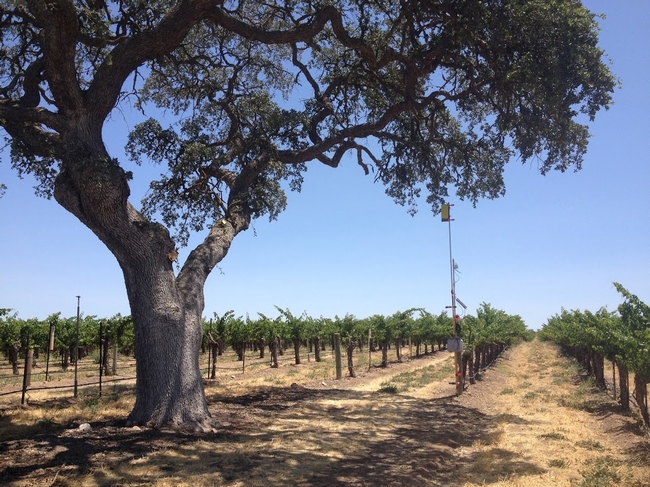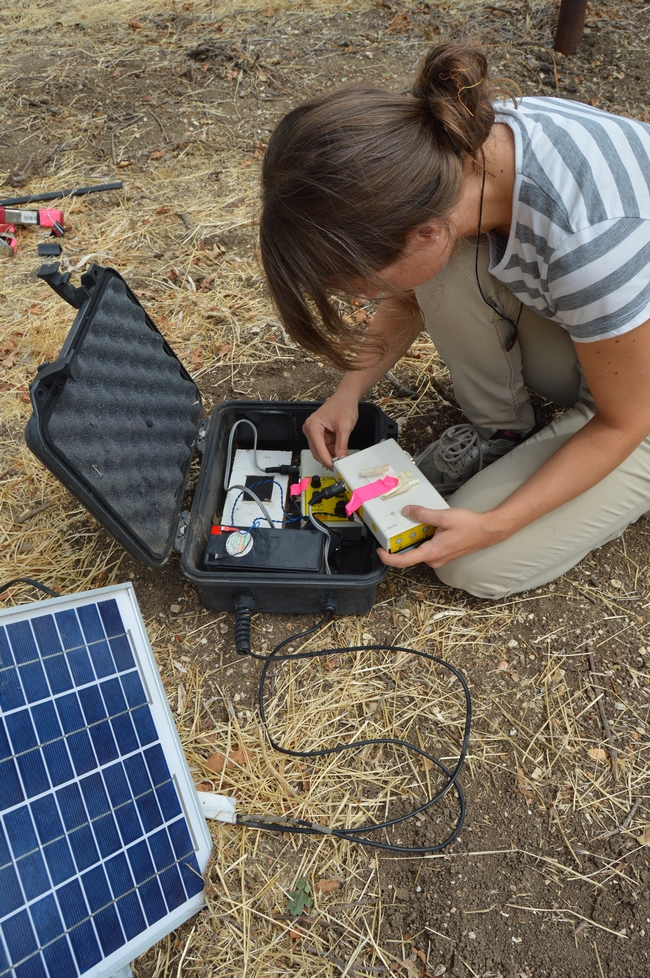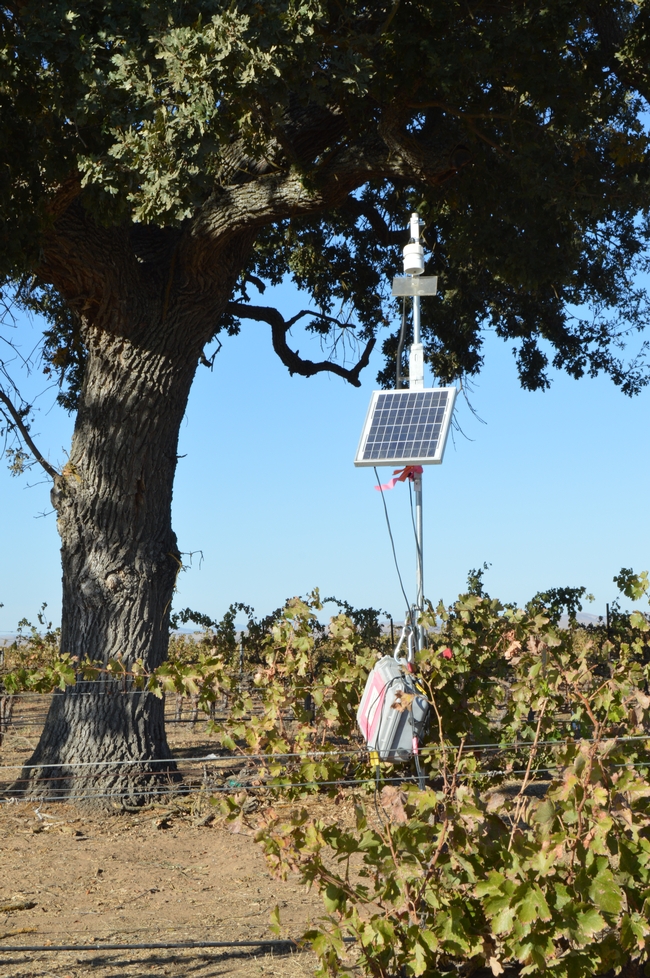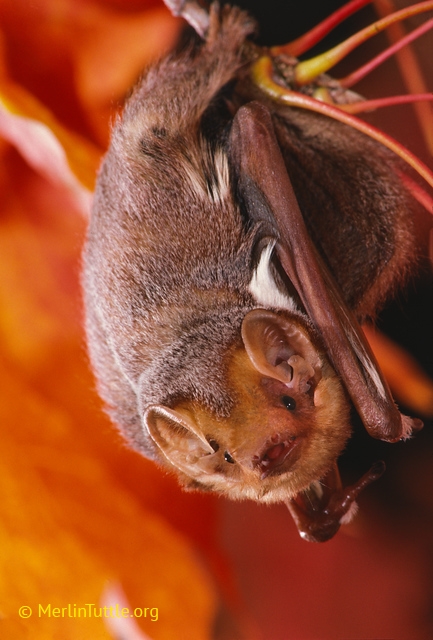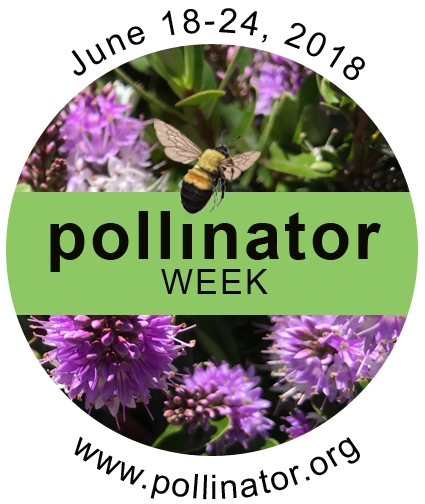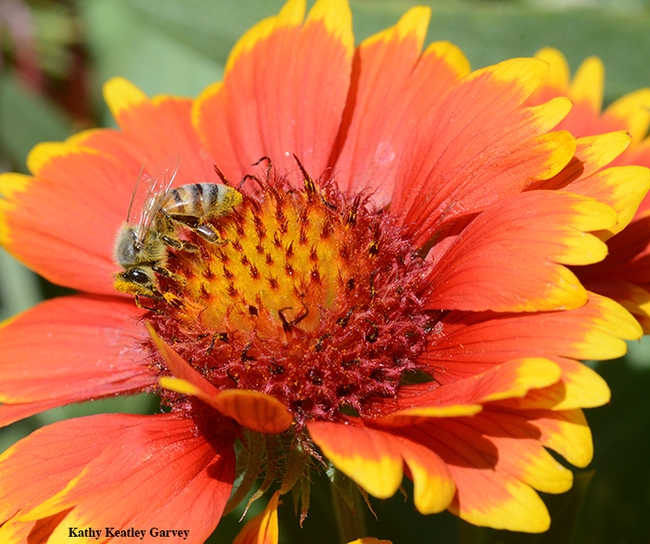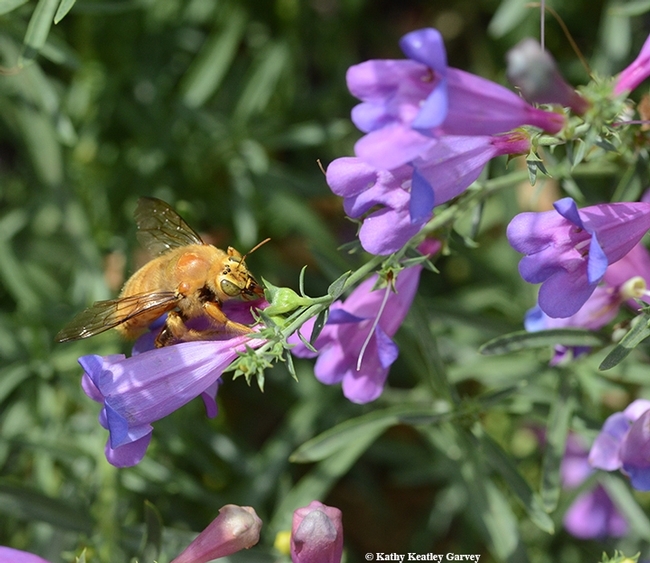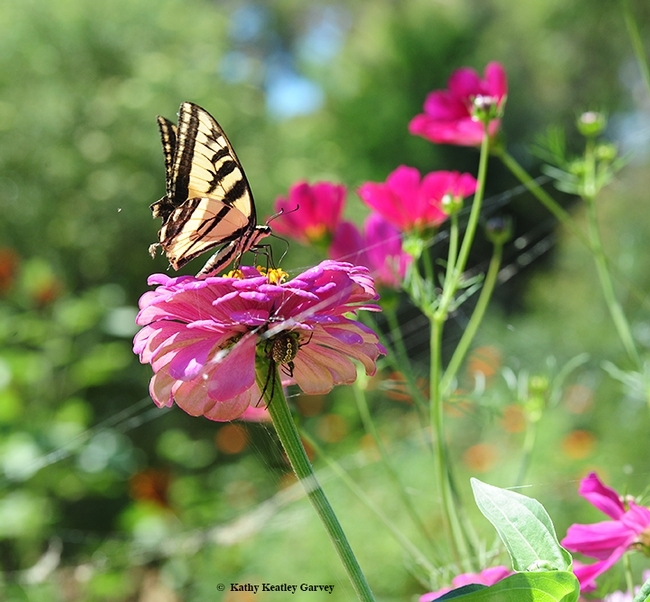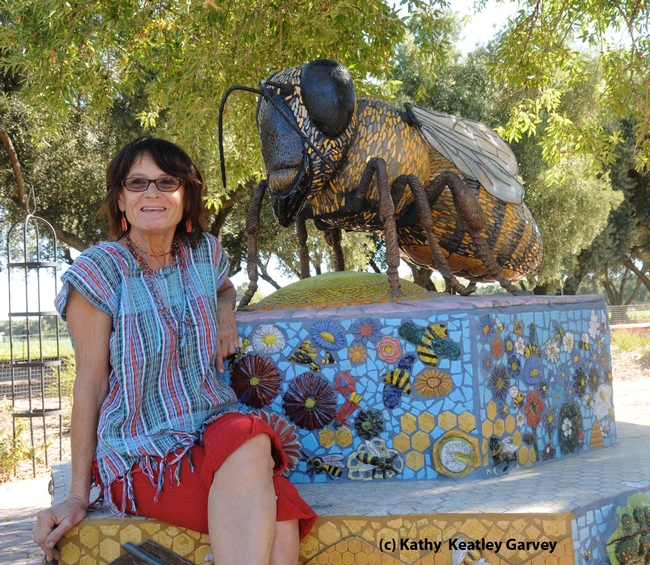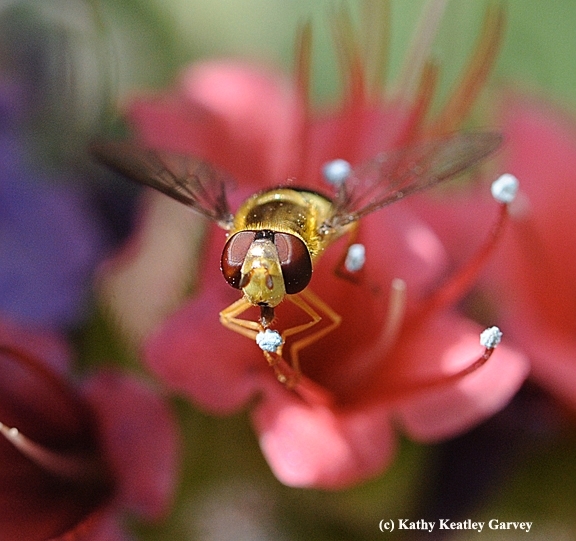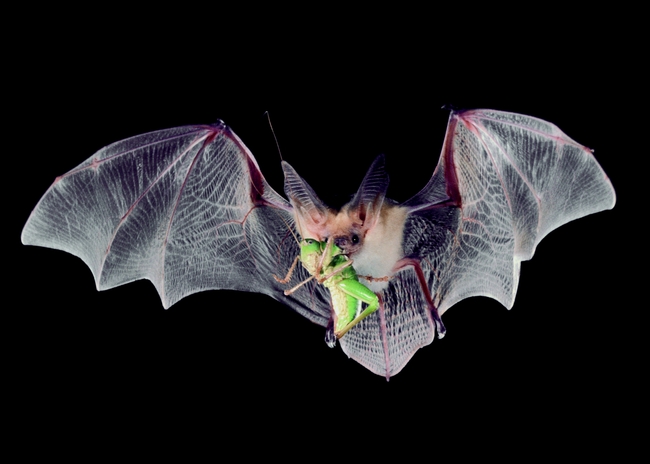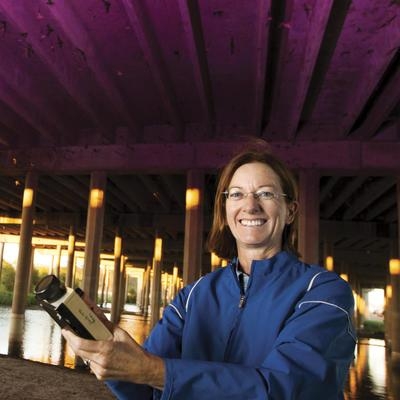Posts Tagged: bats
Oaks in vineyards a ‘win-win’ for bats and growers
Californians love their oak trees. During vineyard development, Central Coast grape growers often feel compelled to leave an old iconic oak standing, even if it ends up right in the middle of their vineyard. While driving through the Central Coast, it's not unusual to see the pattern of vineyard rows broken by a majestic oak tree. Aside from their beauty, what are some of the ecosystem services that these majestic trees provide?
To find answers, a UC Cooperative Extension scientist in San Luis Obispo County collaborated with a U.S. Forest Service scientist to study how bats use blue oak and valley oak trees in vineyards. UC Cooperative Extension specialist Bill Tietje, a co-author of the study, says they focused on bats that eat insects because bat populations have declined dramatically in some areas due to habitat loss and disease. “And bats don't hurt grapes. As a matter of fact, thanks to the huge number of bugs they consume—bats could be very good for a vineyard.”
To understand the potential value of remnant oak trees for insectivorous bats, the researchers placed microphones to detect bat calls within 14 Central Coast vineyards. The recordings revealed 11 species of insectivorous bats foraged within the vineyards and bat foraging activity was 1.5 times greater at the trees compared to open, tree-less areas within the vineyard. And the bigger the tree, the bigger the number of bats it attracted.
“The study results suggest that the large oak tree in my vineyard not only increases the beauty and biodiversity of the agricultural landscape, but also attracts insect-eating bats that can provide natural pest control—a win-win,” said grape grower Jerry Reaugh, who cooperated with the researchers.
In fact, the presence of insectivorous bats called woodland-adapted bats more than doubled within the vineyards with trees. The study indicates that the oak trees attracted woodland-adapted bats that would normally be absent from vineyards.
Tietje hopes that the free insect-reduction services provided by bats will increase grape growers' incentive to manage and maintain the trees, and even to plant new oak trees in suitable areas around their vineyard, in mutual benefit to both agriculture and biodiversity.
“In addition to their value for insectivorous bats, remnant trees maintain bird and insect diversity by providing food, habitat, cover and stepping stones that facilitate the movement of wildlife within agricultural landscapes,” said Tietje.
This study comes at a time when declining blue oak and valley oak populations are of great concern.
“We hope the study will increase awareness of these beautiful and beneficial trees and make the case for conservation and restoration,” Tietje said. “Preserving and enhancing biodiversity in the midst of climate change is key to ensuring resilience in our landscapes and communities.”
National Pollinator Week: Open house at UC Davis Bee Garden
June 18-24 is National Pollinator Week.
Do you know where your pollinators are? Think bees, birds, butterflies, bats and beetles.
And think flies. Especially syrphid flies, also known as "flower flies" and "hover flies."
The UC Davis Department of Entomology and Nematology is hosting an open house during National Pollinator Week from 11 a.m. to 2 p.m. at its bee garden, Häagen-Dazs Honey Bee Haven on Bee Biology Road, west of the central UC Davis campus.
Here's what you can expect to see or do:
- learn how to catch and observe bees up close
- see honey bees at work in an observation beehive
- learn about bee diversity and identification
- learn about what and how to plant for bees
- learn about growing and good pollination in home fruit gardens
- see easy-to-grow bee plants and solitary bee houses available for a donation to the garden.
The Häagen-Dazs Honey Bee Haven, installed in the fall of 2009 and located next to the Harry H. Laidlaw Jr. Honey Bee Research Facility on Bee Biology Road, off Hopkins Road, is a half-acre garden devoted to bee pollinator conservation and education. It was founded and sprang to life during the term of interim department chair, Professor Lynn Kimsey, director of the Bohart Museum of Entomology, who coordinated the entire project. Kimsey was singled out for her work when the Pacific Branch of the Entomological Society of America honored her and four others – "The Bee Team"– with the 2013 outstanding team award.
A Sausalito team – landscape architects Donald Sibbett and Ann F. Baker, interpretative planner Jessica Brainard and exhibit designer Chika Kurotaki – won the design competition. The judges were Professor Kimsey; founding garden manager Missy Borel (now Missy Borel Gable), then of the California Center for Urban Horticulture; David Fujino, executive director, California Center for Urban Horticulture at UC Davis; Aaron Majors, construction department manager, Cagwin & Dorward Landscape Contractors, based in Novato; Diane McIntyre, senior public relations manager, Häagen-Dazs ice cream; Heath Schenker, professor of environmental design, UC Davis; Jacob Voit, sustainability manager and construction project manager, Cagwin and Dorward Landscape Contractors; and Kathy Keatley Garvey, communications specialist, UC Davis Department of Entomology and Nematology.
Others with a key role in the founding and "look" of the garden included the UC Davis Art/Science Fusion Program, founded and directed by the duo of entomologist/artist Diane Ullman, professor and former chair of the UC Davis Department of Entomology, and self-described "rock artist" Donna Billick of Davis. Miss Bee Haven, a six-foot long worker bee sculpture, the work of Billick, anchors the garden. The art in the garden is the work of their students, ranging from those in Entomology 1 class to community residents. Eagle Scout Derek Tully planned, organized and built a state-of-the-art fence around the garden.
Why are pollinators so crucial? Take it from the Xerces Society for Invertebrate Conservation:
"Pollinators are essential to our environment. The ecological service they provide is necessary for the reproduction of over 85 percent of the world's flowering plants, including more than two-thirds of the world's crop species. The United States alone grows more than 100 crops that either need or benefit from pollinators, and the economic value of these native pollinators is estimated at $3 billion per year in the U.S. Beyond agriculture, pollinators are keystone species in most terrestrial ecosystems. Fruits and seeds derived from insect pollination are a major part of the diet of approximately 25 percent of all birds, and of mammals ranging from red-backed voles to grizzly bears. In many places, the essential service of pollination is at risk from habitat loss, pesticide use, and introduced diseases."
So, on Saturday, June 23, you won't see any red-backed voles or grizzly bears. But you'll see bees, butterflies, birds and beetles.
And flies. Syprhid flies.
For more information on the open house, access https://hhbhgarden.ucdavis.edu/wp-content/uploads/2018/01/Pollinator-week-flyer-2018-1.pdf
Migrating bats may be resting, not sick, says UC bat expert
California is in the middle of the Pacific Flyway, a major north-south flyway for migratory birds, and also bats, that extends from Alaska to South America.
“Every autumn, migratory bats, such as the Mexican free-tailed bats, travel to their overwintering grounds in Southern California and Mexico, where there's plenty of bugs to eat; they come back each spring to raise their families,” said Rachael Long, a UC Cooperative Extension advisor who studies bats.
Bats are beneficial because they feed on insects, including mosquitoes and pests such as codling moths that damage fruit and nut crops. The economic value of bats for pest control on farms has been estimated by some studies to exceed $23 billion per year. Long, who serves Sacramento, Solano and Yolo counties, is studying the value of bats for pest control in walnut orchards.
In the city of Davis, officials recently warned people to stay away from bats after bats found on the UC Davis campus tested positive for rabies. Long agrees with the warning, but worries that it might also result in healthy bats being killed.
“This is most unfortunate for people and bats, but not a surprise at this time of year. Right now, thousands of bats are flying through our great Central Valley, migrating south for the winter, just like ducks and geese, so there's a higher chance of contact,” she said “We just don't see bats as much because they are flying at night, using the stars, earth's magnetic field, and landscapes to navigate.”
Their journey south is lengthy, from as far north as Washington state to Mexico, and exhausting, so bats need to rest along the way.
“Sometimes you'll see one or more tucked up in the corner of your house, such as under an eave,” Long said. “If so, use this as an opportunity to share with others the amazing life of a bat that can fly over a thousand miles to their overwintering grounds and back again in the spring. Leave them alone, let them rest, and they will fly away after they've rested and recovered.”
If you have to move a bat, she notes you should wear gloves and not handle a bat with bare hands because they will bite in self-defense.
“If you find a bat on the ground, place a box over the bat and using a piece of card, slip it under, then gently and carefully slide the bat into the box,” Long said. “Place the box at 4 to 5 feet off the ground and open it (bats usually can't take off from the ground). The bat can then crawl out of the box in its own time and fly away.”
“If the bat does not fly away within 30 minutes, it is probably sick or injured. In this case, contact a wildlife rescue unit in your area.”
Long noted that animal control officers have to euthanize bats to test for rabies.
“The bat may be perfectly healthy, just tired,” she said. “If no people or pets have obviously touched the bat, you can call a wildlife rescue organization. If in doubt, call animal control.”
If a bat does have rabies, Long said, “Rabies dies within five to 10 minutes after the bat dies.”
For more information on the benefits of bats, see Long's post in UC ANR's Green Blog, “Bats in the Belfry? No, Bats in Walnut Orchards” at //ucanr.edu/blogs/blogcore/postdetail.cfm?postnum=17395.
Rachael Long: A Boy, a Bat, a Coyote and a Crow
It doesn't get more real. Yolo County Farm Advisor and children's book author Rachael Freeman Long remembers telling her son stories about an...
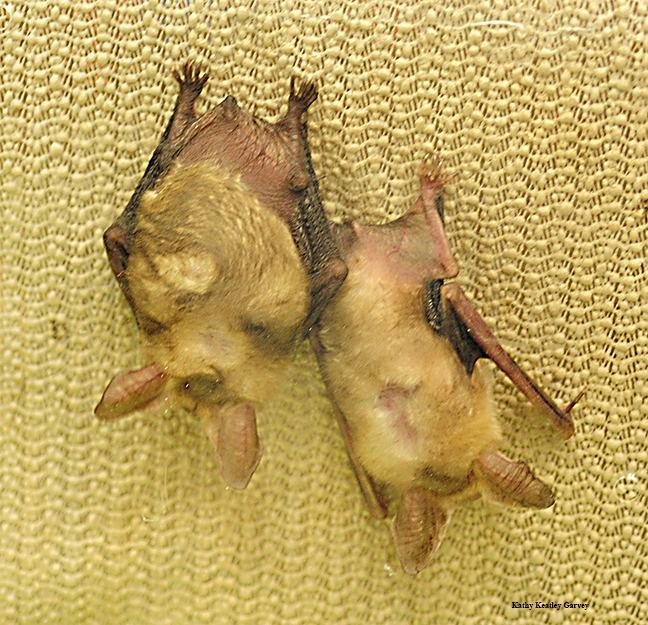
Pallid bats, shown here hanging upside down, were featured at Rachael Long's presentation on her second book, "Valley of Fire,"at the Avid Reader, Davis. She will speak on her latest and last book in the trilogy, "River of No Return," at 1 p.m., Saturday, Aug. 20 at the Avid Reader. (Photo by Kathy Keatley Garvey)
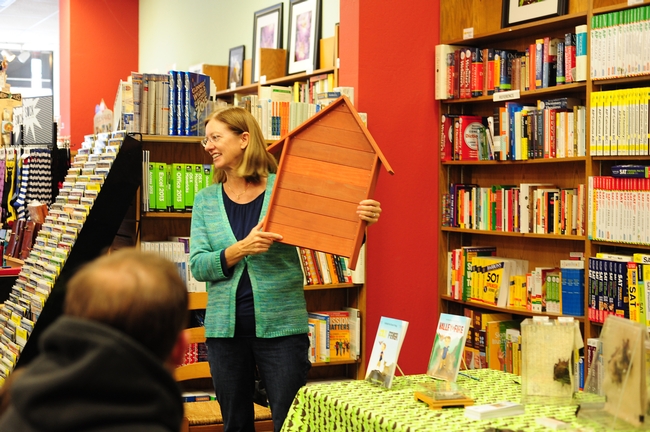
Rachael Long, in a presentation at the Avid Reader, shows a bat house. (Photo by Kathy Keatley Garvey)
Pollinator Pavilion: A Prized Exhibit at UC Davis Picnic Day
Pollinator Pavilion. Picnic Day. They go together like honey bees on bee balm and bumble bees on tomatoes. When you attend the 102nd annual...
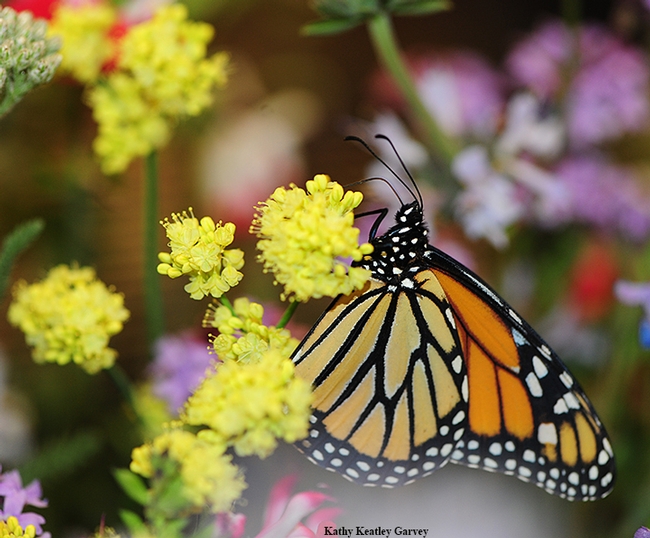
Monarch butterfly nectaring on plants inside the 2015 Pollination Pavilion enclosure. (Photo by Kathy Keatley Garvey)
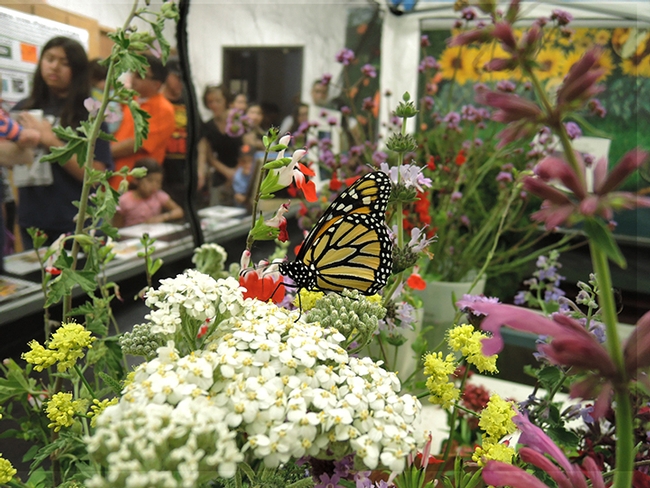
Crowds peered through the 2015 Pollinator Pavilion enclosure and then entered excitedly. (Photo by Kathy Keatley Garvey)


